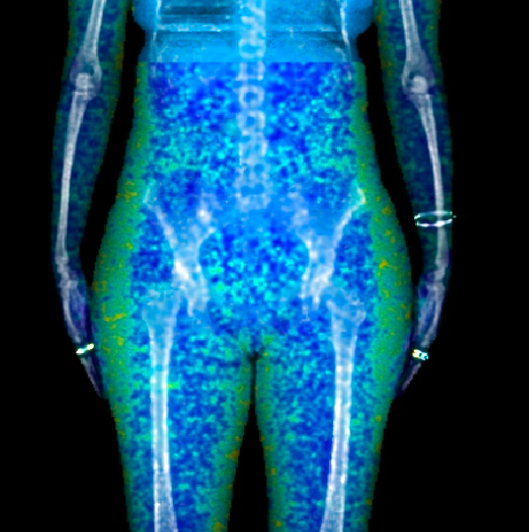Why Reducing Your Waist Circumference Matters to Your Health and Vitality

As women, our bodies tell the story of our lives—full of joy, challenges, and….erm…transformation. But as we age, changes like an expanding waistline can feel somewhat frustrating and confusing, to put it mildly. Beyond aesthetics, carrying too much fat around your middle is a health concern that impacts your risk of chronic diseases.
Understanding Body Fat: Types and Their Impact
Body fat isn’t inherently bad; it plays essential roles in regulating hormones, providing energy, and insulating your body. But not all fat is created equal.
- Subcutaneous Fat: Found just beneath your skin, this fat acts as insulation and an energy reserve. While it may affect your appearance, it’s less risky than visceral fat.
- Visceral Fat: This fat surrounds your organs deep in your abdomen. It’s metabolically active, meaning it releases hormones and chemicals that can disrupt your body’s balance. Too much visceral fat is linked to serious health risks, such as heart disease, type 2 diabetes, and certain cancers.
- Essential Fat: This is the fat your body needs for basic functions, like hormone production, brain health, and organ protection. It’s a small but vital percentage of your overall fat.
Excess visceral fat is particularly concerning because it’s more than just extra weight—it actively harms your body’s systems.
Why Waist Circumference Is a Key Health Metric
Measuring your waist circumference is a simple way to assess your risk of carrying too much visceral fat. To do this:
- Wrap a measuring tape around your natural waist, just above your belly button.
- For women, a waist measurement over 88 cm (35 inches) indicates an increased risk of health complications.
Another helpful metric is Body Mass Index (BMI), which estimates whether your weight is appropriate for your height. Here’s how to calculate it:
- Multiply your height in meters by itself (e.g., 1.65 x 1.65 = 2.7225).
- Divide your weight in kilograms by this number (e.g., 70 ÷ 2.7225 = 25.7).
A healthy BMI typically falls between 18.5 and 24.9, but BMI doesn’t consider fat distribution or muscle mass, so isn’t always the best measure (muscle is much heavier than fat). Pairing BMI with waist measurements gives a clearer picture of your health risks.
The most accurate way to measure your visceral fat is via a DEXA scan. Like the image here (which is an actual scan of our co-founder Lisa), a DEXA scan will give you a full picture of where you are carrying this fat, and the changes you need to make.
Health Risks of Excess Belly Fat
Carrying too much visceral fat can increase your risk of:
- Type 2 Diabetes: Caused by insulin resistance.
- Heart Disease: Linked to higher cholesterol and inflammation.
- Stroke and Hypertension: Resulting from chronic blood pressure issues.
- Certain Cancers: Including breast and colorectal cancers.
- Fatty Liver Disease: Due to fat buildup around your liver.
The good news? Your body is resilient, and reducing visceral fat can significantly lower these risks.
Solutions to Reduce Belly Fat
- Eat for Health: Focus on whole, unprocessed foods like vegetables, lean proteins, whole grains, and healthy fats. Limit refined carbs and added sugars, which contribute to fat storage.
- Exercise Regularly: Find activities you enjoy, like walking, yoga, swimming, or weight training. Exercise helps burn visceral fat and improves overall energy. Building more muscle increases your metabolism as muscle burns more calories at rest.
- Manage Stress and Sleep: Stress and sleep deprivation can trigger hormonal changes that promote fat storage. Aim for 7–9 hours of sleep and practice mindfulness or meditation.
- Support with Trimmed: Our supplement, Trimmed, is formulated to support metabolism and fat reduction. When combined with healthy lifestyle changes, it can help you feel more in control of your health.
Reclaim Your Health and Vitality
Reducing your waist circumference isn’t just about how you look; it’s about protecting your health, boosting your confidence, and feeling your best in this season of life. Small, consistent changes can have a big impact, and every step forward is worth celebrating.
---
References
- Harvard Health Publishing. “Abdominal Fat and What to Do About It.”
- Mayo Clinic. “Visceral Fat: Why It's Dangerous and How to Reduce It.”
- Centers for Disease Control and Prevention (CDC). “About Adult BMI.”
- National Heart, Lung, and Blood Institute (NHLBI). “Calculate Your Body Mass Index.”


